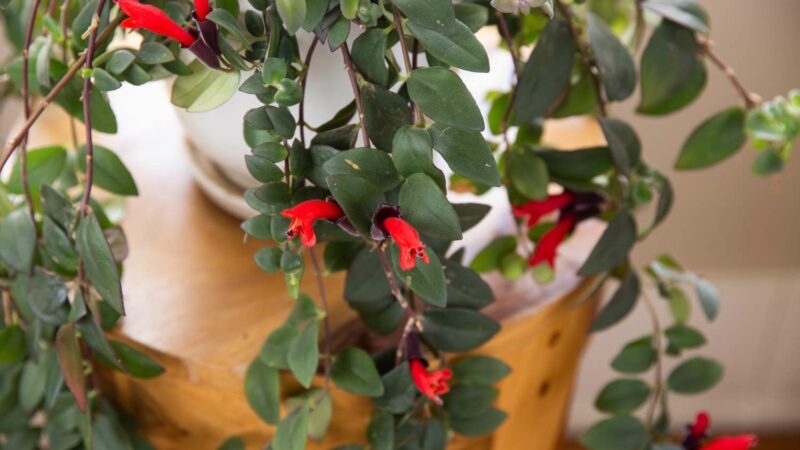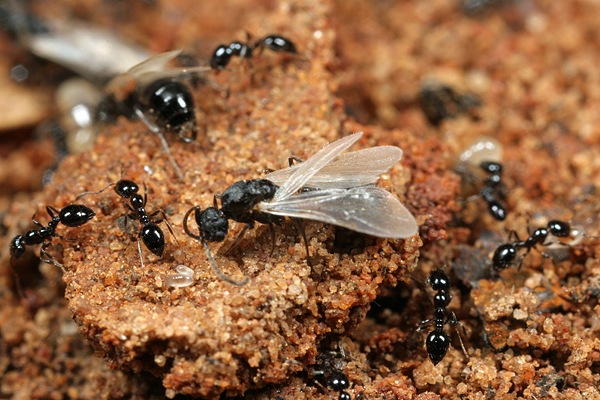How To Grow Pussy Willows: 2023 Complete Guide

Pussy Willows – Pussy Willows is a name that is allotted to various small willow species which belong to the Salix genus. This name is applied to the deciduous shrub Salix Discolour, which grows in North America with the help of two European species–S. Cinerea and S. Caprea are also regarded as Pussy Willow sometimes.
The Fury Catkins–Pussy Willow Flowers are the earliest harbinger in the spring season. Their branches are preserved and then used in various decorative arrangements. This shrub is often found in areas of wild wetlands. However, if you have the required conditions, you can also try growing this shrub in your garden.
For some species, Pussy Willows achieve heights of about 25 ft. as they spread quickly and proliferate. In just a few months, you can get a fully developed plant of pussy willow just by sticking its branch in the soil. Planting can succeed in the summer but is most often done in the spring.
Pussy Willows care
As we have mentioned above, pussy willows are often found in wetlands, and therefore, they will require a large amount of water. It can be the perfect choice for a poorly draining area in your yard. Pussy Willows have nosy roots and therefore scatter them away from water lines, sewer lines and septic tank fields.
You can keep pussy willows more shrub-like with their proper trimming. Pussy willows are very breakable and, therefore, weak, so through adequate trim, you can prevent damaging it from snow and ice.
Pussy willows are unisexual as the male trees produce white catkins, and the female trees produce dull greenish catkins. In the later spring, white catkins harvest tiny flowers which are full of pollen. Green catkins bear their flowers which receive the male pollen through bees and flies.
After the catkins, oval leaves occurred, after which the plant pussy willow became a willow shrub with lance-shaped and dull green leaves.
Light
Pussy willows can tolerate some shadow but perform their best in broad daylight.
Soil
Pussy willows are very fond of rich, moist and loamy soil. It will perform its best when the soil is constantly moist, even if it is well-drained. It can tolerate soil that is poorly drained.
Water
Moisture is something that these plants are very fond of. For controlling soil erosion, they are instrumental. They prosper in the wild on the banks of streams. You only have to ensure they are not exposed to drought conditions and have abundant water.
One inch of irrigation or rain per week is enough in water-retentive and dense soil. But in the case of porous soil, it requires frequent watering.
Humidity and Temperature
Pussy willows perform their best in cold winters with temperate conditions, as in Canada and Northern United States (zones 4-5). Their growth gets slow in warmer climates (zones 6-8).
They will willingly tolerate high humidity.
Fertilizer
Pussy willows perform their best when fed with leaf mould or compost. When the plant gets plus one year of age, you can fertilize it using a balanced fertilizer. For ½ inch of base-trunk diameter, you can use ½ pound of balanced fertilizer and spread it 18 inches behind the branches.
Ensure the fertilizer does not come into contact with the plant’s trunk.
Pussy willow types–
Pussy Willow name is applied to the deciduous shrub, Salix Discolour, which grows in North America. However, many other Salix species also carry the common name. Some of them are as follows:-
- Salix Caprea – It is Eurasian pussy willow, and it is also known by the name of goat willow.
- Salix Caprea Pendula – it is pussy willow that is weeping. Rather than growing as an upright bush, it grows like a ground cover.
- Salix Cinerea – This plant is very nosy and is indigenous in Western Asia and Europe. It must be avoided as a landscape plant.
Trimming
Trimming helps in promoting new branches and which results in much larger catkins. The objective is to enlarge the shrub’s size sidelong while controlling its upward growth. Trimming also helps in preventing insect problems, fungi and diseases.
If you think the plant should be started from scratch as it is no longer tidy, then this is something you would like to know–this plant positively responds to drastic trimming. You can trim it to the ground, and still, it will come up but this time with a more rounded shape.
Catkin branches are usually harvested in early spring or late winter, but winter is the perfect time for excessive trimming. The yearly trimming routine for these plants follows these steps:-
- Harvest catkins in early spring or late winter.
- Remove every dead branch in the late winter, then cut ⅓ of the oldest branches (bear grey colour) to the ground.
- Ascertain the new branches (brown). These new branches’ tops will indicate your cuts which are remaining, as they will be on those tops, harvested for catkins. Make cuts to the level of the new branches. Use sharp trimmers and make cuts above the bulge, as it is very effective. Then, an offshoot will grow externally from the branches’ outer part.
- Intersecting branches should be restricted as they decrease the quantity of catkins by providing shade to one another.
Propagating Pussy Willows
If you want new plants, then you can breed pussy willows either by planting and collecting seeds or by stem cuttings. The most well-known approach is the stem-cutting method, which is very easy. The steps for using the stem-cutting method are as follows:-
- All you have to do is make a thick cut using bypass trimmers 1 foot long from the brown branches (new growth). Green growth is much better than grey.
- Cut the branches’ ends into the ground and a few inches (to provide stability) underground. Some bulge showing above the ground.
- Keep the soil moist.
- Within a few weeks, new leaves and roots will begin to develop, and there will be rapid growth.
Bring your cuttings inside and put them in water if you have little time to wait for summer.
Growing Pussy Willows – From Seeds
Through stem cuttings, pussy willows are very easy to breed. But gathering the seeds at that point where they look shaggy is relatively easy. Then, sow those seeds asap in a container with the seed hairs still intact.
Make sure that the soil is moist till the time the seeds sprout. Then until the development of solid seedlings, grow them continuously.
Growing Pussy Willows – In Pots
You can also grow pussy willows in pots, but it is generally done in the case of young plants, as those plants are more likely to overgrow and, with age, get root-bound. Use any potting mix with good drainage in a big pot.
Potted pussy willows aren’t permanent houseplants as they grow outdoors. In winter, like all the perennial plants that grow in pots, pussy willows are best when moved to a shady area.
Repotting them every few years is very important as they will overflow their pot rapidly. While doing this, change the size of the pot to at least twice the size of the previous one. Dividing the rootball will be best.
As compared to the in-ground plants, pussy willows in pots will require more frequent watering.
Overwintering
In late fall, it is worth mentioning to keep this plant frequently well-watered and therefore, no overwintering techniques are needed for pussy willows.
Plant Diseases & Common Pests
These plants are vulnerable to a large number of pest problems and diseases, as it is a very intense and healthy shrub. It survives all the threats without interruption, rather than trimming those damaged branches.
Some diseases include cankers 1, grey scab, leaf spots and powdery mildew. Affected branches should be trimmed. Insect pests include caterpillars, lace bugs, borers, scales and aphids. When there is severe infestation–pesticides can be used.
Preserving Pussy Willow Branches
Care has to be taken to make sure that these plants form catkins. All you have to do is secure those harvested branches and preserve them so that it becomes the most useful in decorative arrangements.
If you choose these plants, keep them in water for days; they will blossom and their beauty will be lost.
There is another method of harvesting branches, before the opening of catkins.
Pick branches that have catkins and are not fully opened.
To do this:
- Look for enlargement at the bulges along their branches–the first indicator of upcoming catkins. If possible, choose a day when the temperature is above freezing.
- Cut a branch of about 2 feet. Place their bottoms in a vase that is filled with water.
- When their ends are immersed, cut 1 inch; this cut made underwater will help in promoting water consumption in the branches. It will be perfect if you add in the water any floral preservative.
- Wrap the areas of those branches exposed in a cloth or damp newspaper to retain the humidity. For at least two days, keep the vase in a dark and cool spot until the colour of the stems becomes visible.
- Unwrap those branches and keep the vase in a cool and shady spot (60-65 degrees Fahrenheit).
- Until catkins start to appear, mist those branches occasionally.
After getting successful, remove the water and preserve it to use them in dry flower arrangements.
Pussy Willow Common Problems
Pussy willows are prolific plants which are generally fast growing and therefore have no issue in harvesting branches for arrangement needs. Many problems can also occur and are listed below:
Green-Yellowish Leaves
This is a plant reminding you they need more light. So, if you have kept it in a pot, then it will become easy to move. But if it is planted, look upwards and check whether other trees’ branches are blocking the sunlight. Trimming those trees will help in the healthy growth of pussy willow.
Cracking Branches
Pussy willows are brittle and therefore have weak branches. When it is windy outside, there are chances that branches might get cracked or split. So, if a big storm is forthcoming, you can tie the branches. Through this, you will be able to avoid some problems.
Use a brush or broom to remove snow-icy build-up.
Damage to Wildlife
Birds, squirrels and deer are very fond of pussy willow branches. If you do not want the plants getting damaged, then make use of fencing or chicken wire to protect them.
Conclusion
In this article, we have discussed everything about pussy willows, including how to take care of them, their types and all about their healthy growth. The most important thing to remember is that they are often found in areas of wetlands and, therefore, require a large amount of water. Thank you for reading this article.
FAQs
What are pussy willows?
Pussy Willows is a name that is allotted to various small willow species which belong to the Salix genus. This name is applied to the deciduous shrub Salix Discolour, which grows in North America with the help of two European species–S. Cinerea and S. Caprea. Pussy Willows achieve heights of about 25 ft. as they spread quickly and proliferate.
Where do pussy willows grow?
Pussy willows are the most significant, fastest-growing species that grows in North America and are often found in areas of wetlands. They thrive in damp soils and near water bodies.
How to grow pussy willows?
Grow pussy willows in moist, well-drained soil. Initially, you are required to support the stem until it is well established. In the first year, frequent watering is highly needed.
How to plant pussy willows?
Cut 12 inches, in early spring, of about a pencil’s diameter. Make another cut on an angle; submerge that cutting in the water or moist soil.





